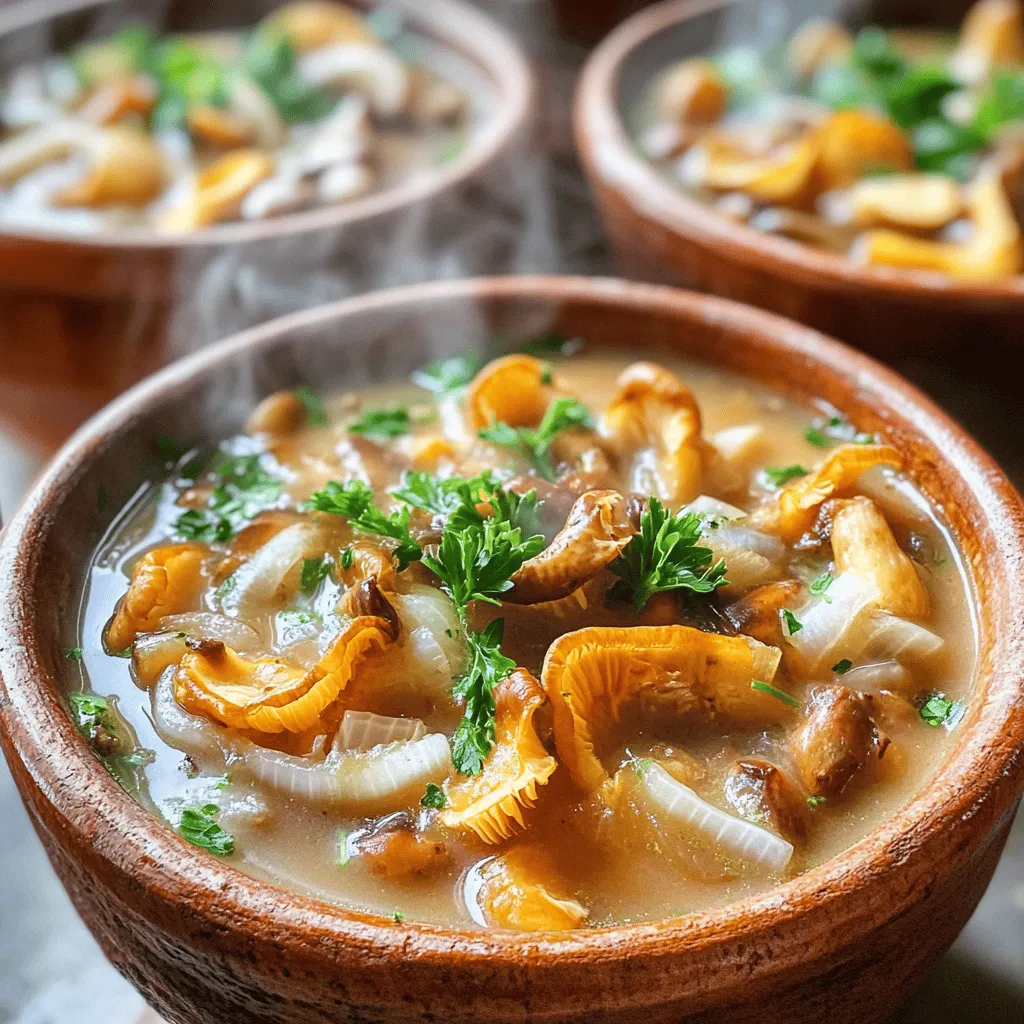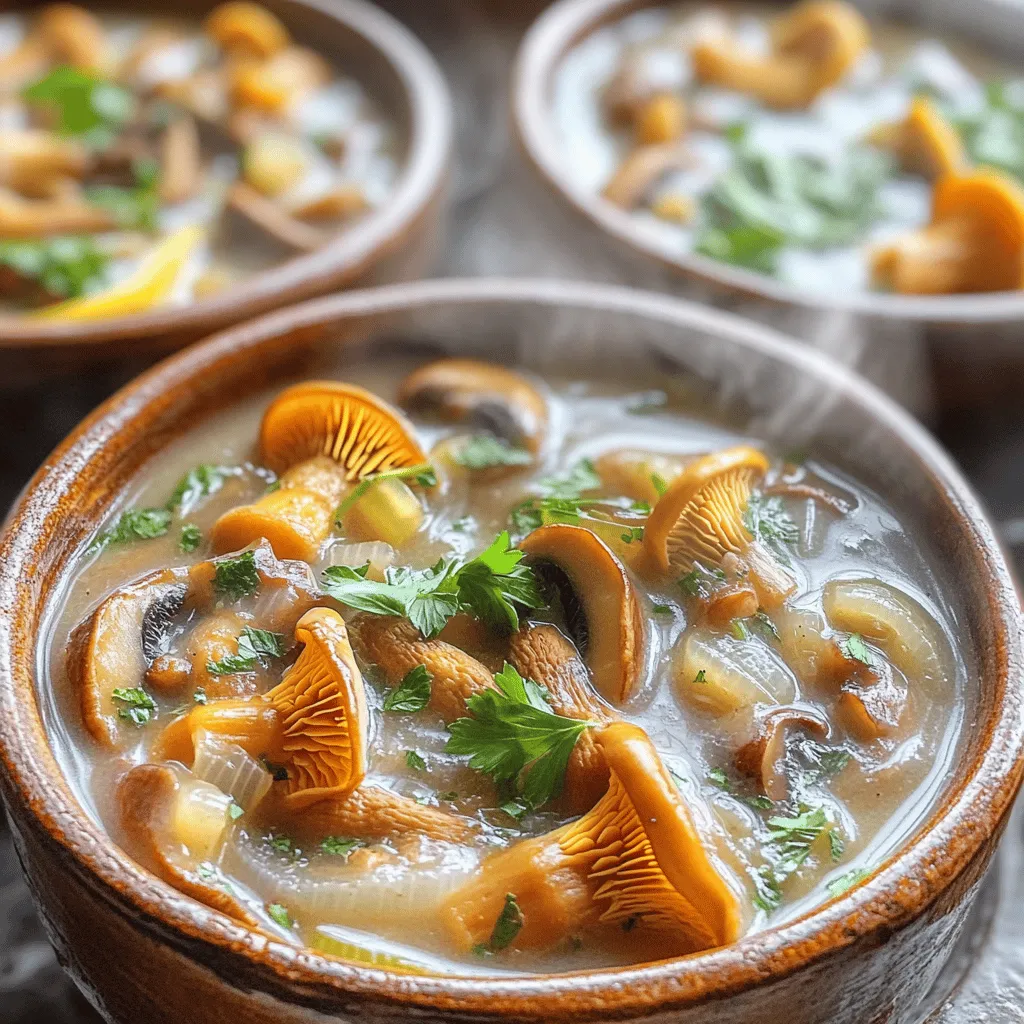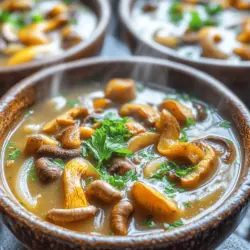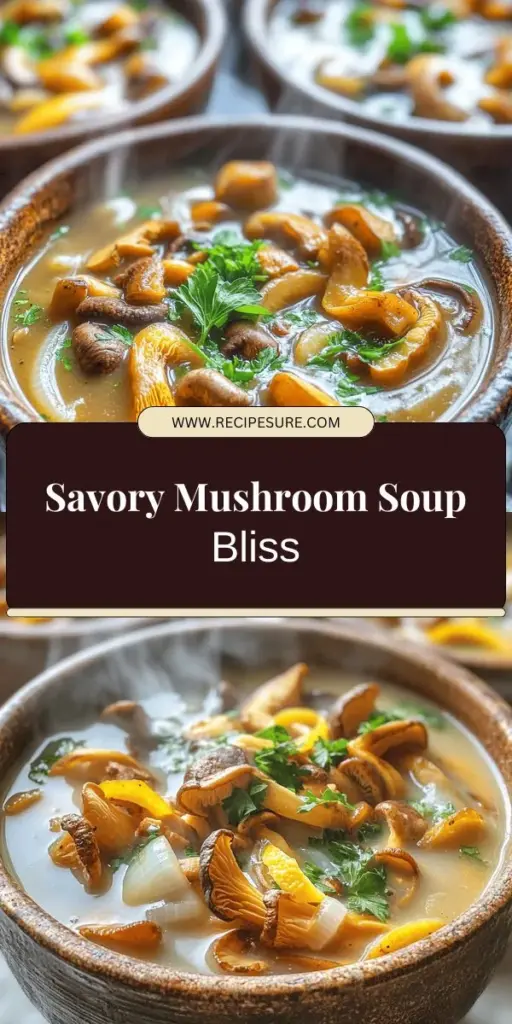If you’re a fan of rich and comforting flavors, mushroom soup is a must-try! This blog dives into how to make soup that warms your soul with every spoonful. I’ll share the best ingredients and techniques, from creamy variations to creative twists. Plus, we’ll explore the health benefits of mushrooms. Read on to become a mushroom soup expert who impresses everyone at the dinner table!
What Are the Essential Ingredients for a Perfect Mushroom Soup?
For a rich and flavorful mushroom soup, you need a few key ingredients. Fresh mushrooms are the star. You can choose from many types. Assorted wild mushrooms add great depth. Chanterelles, shiitake, and cremini all work well.
Next, you need a good base. I recommend vegetable broth for a lighter taste. This keeps the soup vibrant and fresh. If you want a creamier texture, add coconut milk. It adds richness without dairy.
Onions and garlic provide a solid flavor base. They create a savory backdrop. Fresh thyme adds an earthy note. Don’t forget salt and pepper to enhance all the tastes.
What Fresh Ingredients Enhance Mushroom Soup Flavors?
Fresh herbs can really boost your soup. Thyme is classic. It pairs perfectly with mushrooms. You can also try parsley as a garnish. It adds color and freshness.
If you want a bit of zing, consider lemon juice. A splash brightens the whole dish. You can also add other herbs like dill or chives for extra flavor. Each choice brings a unique twist.
How Do Different Mushrooms Impact Soup Taste and Texture?
Different mushrooms change the soup’s taste and texture. For example, shiitake mushrooms have a rich, meaty flavor. They give a hearty feel that many love. Chanterelles are delicate and have a fruity taste. They add a touch of elegance.
Cremini mushrooms are robust and versatile. They blend well with other flavors. Using a mix of mushrooms creates a more complex soup. This depth makes each spoonful exciting.
Can I Substitute Ingredients for Dietary Preferences?
Yes, you can substitute ingredients in mushroom soup. If you prefer a vegan option, use vegetable broth and coconut milk. They are great for creamy textures without dairy.
For gluten-free diets, ensure your broth is gluten-free. If you are allergic to mushrooms, try using other vegetables. Cauliflower or butternut squash can work well. They provide a similar creamy base when blended.
How Can I Make a Creamy Mushroom Soup at Home?
To make a creamy mushroom soup, start with quality mushrooms. I love using a mix of wild mushrooms like chanterelles, shiitake, and cremini. These give your soup a rich taste. For the best texture, cook the mushrooms until they are golden brown. This step adds depth to the flavor.
What Techniques Yield a Silky Smooth Consistency?
For a silky smooth consistency, blending is key. You can use an immersion blender for ease. If you prefer, transfer the soup in batches to a regular blender. Blend until you achieve a creamy texture. If you want even more creaminess, add coconut milk. It works well and keeps the soup dairy-free.
Which Dairy or Non-Dairy Alternatives Work Best?
If you choose dairy, heavy cream is a classic choice. It adds richness and a velvety feel. However, for non-dairy options, coconut milk shines. It adds a subtle sweetness and creaminess. Almond milk is another option, though it may not be as rich.
Are There Specific Techniques for Vegan Creamy Mushroom Soups?
For vegan creamy mushroom soup, focus on using plant-based ingredients. Blend soaked cashews into the soup for added creaminess. You could also use silken tofu. This adds protein and texture without dairy. Remember to season well with salt, pepper, and lemon juice for a balanced flavor.Enjoy making your own creamy mushroom soup!

What Are Some Creative Variations of Mushroom Soup?
You can twist a basic mushroom soup recipe in many fun ways. Start by adding herbs like rosemary or basil. These will give your soup a new taste. You can also use different types of mushrooms. Try using portobello or oyster mushrooms for a rich flavor. Mixing in a splash of wine adds depth too.
Regional variations bring unique flavors. In France, they might use sherry and cream. In Russia, they often add dill and sour cream. Each region has its own twist that makes the soup special. You can explore these styles to find what you love.
Unexpected ingredients can also make your soup shine. Think about adding a touch of curry powder for warmth. A bit of soy sauce can bring umami flavor. You could even toss in some spinach or kale for extra greens.
For a unique take, consider using a mix of nuts, like cashews, to thicken the soup. They add creaminess without dairy. You can make your mushroom soup feel gourmet with just a few changes.It’s a great way to play with flavors and impress your friends.
What Nutritional Benefits Can Be Found in Mushroom Soup?
Mushroom soup offers many nutritional benefits. It is low in calories and rich in nutrients. Mushrooms are packed with vitamins, minerals, and antioxidants. They help support your immune system and improve heart health.
What Are the Health Benefits of Including Mushrooms in Your Diet?
Mushrooms provide several health benefits. They are low in fat and high in fiber. Fiber aids digestion and helps you feel full. Mushrooms also contain B vitamins, which help convert food into energy. They have selenium, an antioxidant that protects your cells. Including mushrooms in your meals can promote overall health.
How Do Different Soup Variants Affect Caloric Intake?
Caloric intake varies with different mushroom soup recipes. A basic mushroom soup made with broth is lighter. Adding cream or coconut milk increases calories.You can adjust ingredients to fit your dietary needs.
Are There Nutritional Considerations for Specific Diets?
Yes, mushroom soup can fit many diets. For vegans, using vegetable broth and coconut milk is ideal. Gluten-free eaters can simply check the broth label. If you watch calories, opt for lighter soup versions. With the right ingredients, mushroom soup can be nutritious for everyone.

How Do I Serve and Store Mushroom Soup Properly?
Mushroom soup is rich and tasty. You can serve it in many ways. It pairs well with fresh bread or a simple salad. A light, crisp green salad complements the soup’s earthiness. Adding a sprinkle of Parmesan cheese on top can enhance the flavor.
When it comes to storing leftover mushroom soup, you want to keep it fresh. Let the soup cool down to room temperature first. Then, pour it into an airtight container. Store it in the fridge for up to three days. If you want to keep it longer, freeze it. Use a freezer-safe container and leave some space for expansion. Frozen soup can last for about three months.
You can make mushroom soup ahead of time. It actually tastes better the next day!Reheat the soup gently on the stove, stirring often. This way, you will enjoy a warm bowl of comfort any time you want.
How Can I Perfect My Mushroom Soup with Culinary Tips?
When making mushroom soup, small changes can make a big difference. Here are some tips that will help you.
What Common Mistakes Should I Avoid When Making Mushroom Soup?
One common mistake is not cooking the mushrooms enough. Cook them until they brown. This adds rich flavor. Another mistake is using too much water in the broth. Keep the broth flavorful for a better soup. Finally, don’t skip the seasoning. Salt and pepper can transform a bland soup into something great.
How Can Seasoning Transform the Flavor Profile of Mushroom Soup?
Seasoning is key to great mushroom soup. Salt enhances the natural taste of mushrooms. Fresh herbs like thyme or parsley add brightness. Lemon juice gives a nice tang. Try adding a dash of soy sauce for umami. Each seasoning choice can change how your soup tastes, so experiment with what you love.
What Cooking Methods Can I Use for Different Texture Outcomes?
You can use various cooking methods for texture. For a chunky soup, blend only part of it. This gives you bits of mushrooms in every bite. If you want it smooth, blend the entire soup. You can also sauté the mushrooms first for a firmer texture. This step helps deepen the flavor and change the soup’s feel.
Mushroom soup is both simple and versatile. We explored key ingredients that elevate the flavor. Different mushrooms change taste and texture, while substitutions make it fit all diets. I showed how to make creamy soup at home and shared tips for unique variations. The nutrition benefits are clear; mushrooms boost your health. Finally, I covered how to serve and store your soup effectively. With these insights, you can create your perfect mushroom soup. Enjoy exploring this delicious dish!


